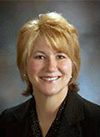
I just read a “Meet Your Contributors” section in the cover story of the October 2021 issue of
Wisconsin Lawyer™ magazine, where Katherine Trudell described her “oddest/funniest legal experience.”
As a young defense attorney, she brought her young son to observe her first sentencing hearing. Seeing the judge in the hallway, she introduced her son without incident. Just before the hearing, she was called into chambers and chastised. “How could you bring your son knowing that you’re going to
jail today?” She was terrified. It took the judge a few moments to appreciate that Trudell was
not the female defendant.
I asked Trudell for her thoughts on that experience. She explained how mortifying it felt not even realizing that she had been perceived as the defendant (even though she had previously appeared before this judge). She discussed early on being mistaken for the court reporter as well as the stenographer, which was uncomfortable.
In retrospect, she felt it was disturbing, especially for those to whom it happens on a regular basis. She mentioned how those new lawyers may have “impostor syndrome,” not feeling that they belong in the first place. Being subject to these inaccurate assumptions only adds to their sense of insecurity.
Assumptions Are Necessary
Yet, assumptions are biologically necessary. We absorb 11 million bits (pieces of information) per second but are only
consciously aware
of 40-50 bits per second.1 We cannot process all that information when we are only consciously aware of a small fraction. While necessary for functioning, this ratio also explains why our assumptions based on automatic associations (that young woman with son is a defendant) are often wrong.
A Moment versus Essence
If Trudell could have discussed with the judge the assumption that the attorney was the defendant, they might have said that it was just an honest mistake, that they are normally very thoughtful in how they approach people. They are
not sexist.
 Lisa Derr , U.W. 1987, is a partner with
Derr & Villarreal in Beaver Dam, where she concentrates her practice in family law and workplace mediation.
Lisa Derr , U.W. 1987, is a partner with
Derr & Villarreal in Beaver Dam, where she concentrates her practice in family law and workplace mediation.
For many of us, the adjective “sexist” implies we are a “sexist person” – a fixed, immutable category. Like the judge, we would probably say that one incident does not make us a “sexist” person.
In the same way, incorrect assumptions based on racial stereotypes imply a fixed category of being a “racist person.” But it is not that simple.
Professor Ibram X. Kendi discusses the meaning of the word “racist” in his book, “How to be an Antiracist.” He noted after an incorrect assumption based on race, people almost always immediately reply “I’m
not racist,” again because of that fixed image of being a fundamentally bad person (e.g., white supremacist, Klan member).
But that adjective describes
behavior at any given moment as opposed to the
essence of a human being. An incorrect assumption does not make one a “racist person” because
every human being has unconscious bias, our instinctive lens through which we see the world.
A Profound Impact
Unfortunately, people can also internalize these negative stereotypes formed from unconscious assumptions. We are familiar with the famous
Clark & Clark (1947) doll test studies used in
Brown v. Board of Education.2 Based upon Mamie Clark’s dissertation research, in 1947, Doctors Mamie Clark and Kenneth Clark videotaped Black and white children who generally chose the white doll when asked to choose the “good one” and the black doll when asked for the “bad one.”
How many professionally dressed Black defense attorneys have been
repeatedly addressed as the criminal defendant? Verbalizing these assumptions diminishes a multifaceted human being to a one-dimensional stereotype.
Over time, it also affects health. More than 100 studies have shown the physical effects of racial discrimination on physical health including heart disease and stroke.3
The Clark study,
which has been replicated, affects all of us. In a
rare 1974 audio interview, Clark (start at 8:19) discusses how the Supreme Court in
Brown v. Board of Education referred to the impact of discrimination on the Black children – but it did not discuss the profound conflict for white children.
However, the impact is not equivalent. Vocational research demonstrates the far-reaching impact on minority populations (racial, ethnic, sexual orientation), especially African Americans, who may have limited employment opportunities because students who internalize discrimination
perceive less opportunity.4
Seeing the Whole Person
Our clients are far more than their gender, ethnicity, or sexual orientation. Yet, we all inadvertently fail to acknowledge the whole person when we make quick assumptions. Years ago, as the mediator making small talk before a session, I asked a person of East Asian ethnicity, “So, where are you from?” He answered, “Pittsburgh.” In that moment, my assumption was that he was not “from here.” It can be received as “You are not one of us.” In that question, I failed to acknowledge the whole person.
During the 2017 State Bar Annual Meeting & Conference, Judge Carl Ashley
recorded an interview and deftly explained how we are a combination of
all the things that make us who we are, all we have learned and experienced. As Judge Ashley states, given the significant negative impact, it is critical that we give ourselves the opportunity to see what that person is made of – what they are about – before addressing or responding to them based upon our unconscious assumptions.
Attorneys, judges, and mediators want to practice responsibly. In practice that is
very difficult, but not impossible. Years ago, speaking with a potential client, our staff asked a man if he had a wife. He was somewhat surprised, “Uhm, uh, no – I’m gay.” We could have asked if he had a spouse or partner, but never knew to do so.
Where to Begin
Awareness, knowledge, and skills are key because these issues cannot be changed merely with anecdotes. But we can do almost
anything if we put in the effort.
Here are seven first steps for those who want to begin:
This article was originally published on the State Bar of Wisconsin’s
Dispute Resolution Blog. Visit the State Bar
sections or the
Dispute Resolution Section webpages to learn more about the benefits of section membership.
Endnotes
1 "Understanding Unconscious Bias,"
NPR Wisconsin Public Radio, July 15, 2020.
2 Brown v. Board of Education, 347 U.S. 483 (1954).
3 See Madeline Drexler, "How Racism Hurts – Literally,"
Boston Globe, July 15, 2007.
4 Danice L.; Brown, D. L.; and Segrist, D. “African America Career Aspirations: Examining the Relative Influence of Internalized Racism,”
Journal of Career Development 177-189 (2016).
